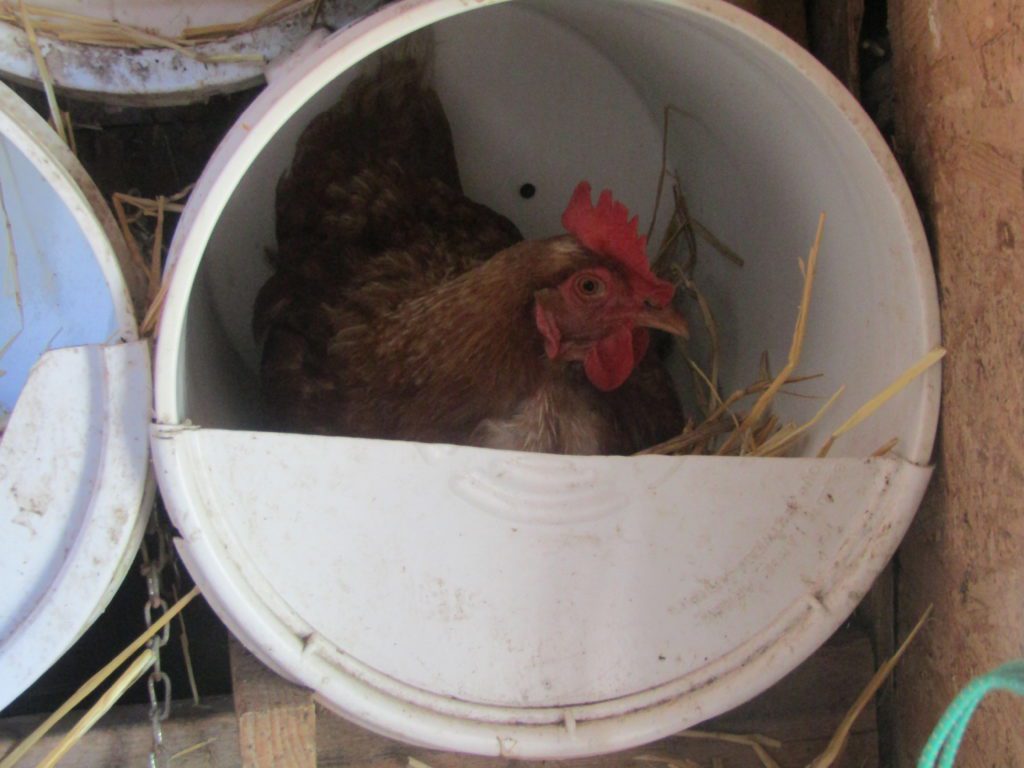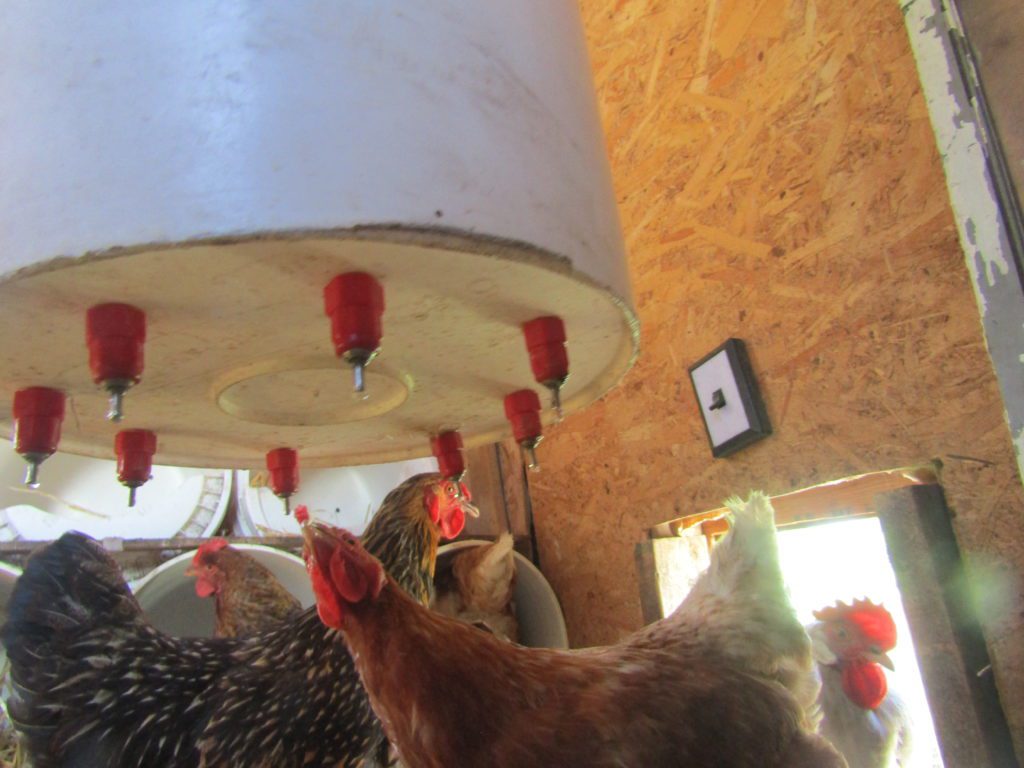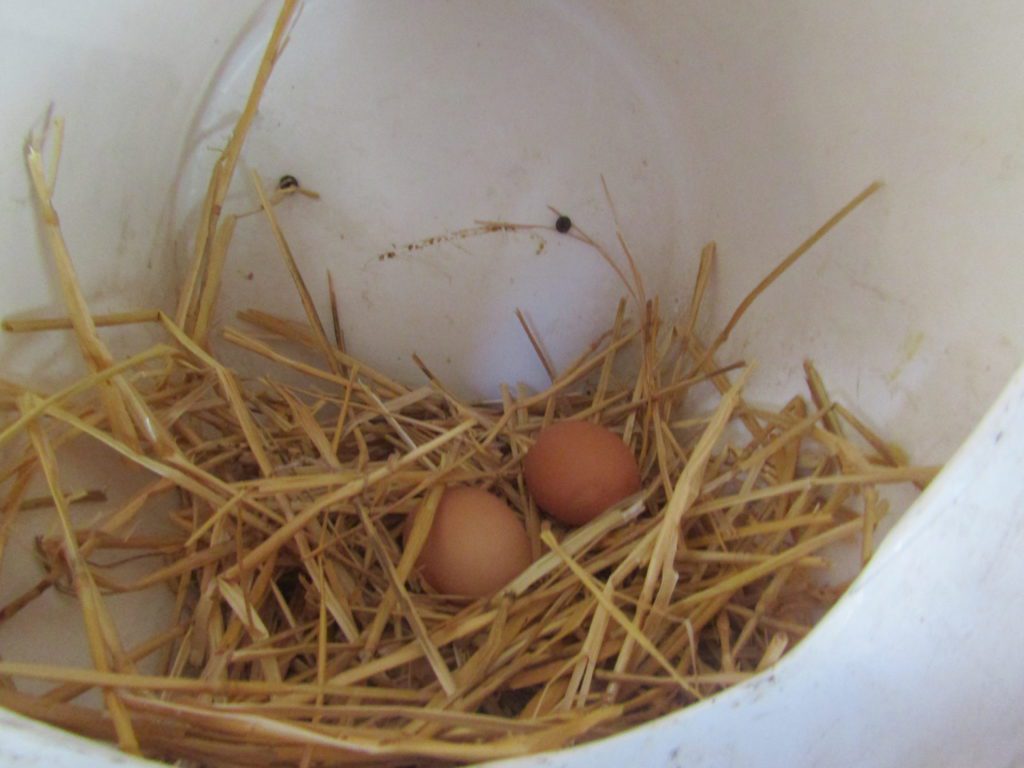

If you read last week's column on chickens, https://mydakotan.com/2022/07/chickens-key-to-self-reliance/, and have decided to include chickens in your preparedness plans, now is the time to get ready. Like bringing a new baby home, when the baby chicks arrive, you'll need to have everything in place.
Living Requirements
Your chicken coop needs three things: floor space, a roosting bar, and a nesting box. For each bird you will need 2.5 square feet of floor, one foot of roosting space, and one nesting box for every two to three chickens. Each bird will also need 15 square feet of outdoor run space.
So, if you are going to have four chickens, you will need a coop that is at least 10 sq. ft., 3' X 4' would be plenty, a roost that is 4 feet long, and two nesting boxes. You can buy nesting boxes, make a small box out of scrap wood, or do what I did -- turn a 5-gallon plastic bucket on its side and cut three-fourths of the lid away to create a lip across the bottom edge of the bucket.

For four chickens you will also need a fenced in run that is 60 square feet. You should have sturdy fencing to keep neighborhood pets out. Dogs and chickens are a notoriously lethal mix. Many city ordinances will also require that you have chicken wire or netting on top of the fencing to prevent chickens from flying out.
Your coop needs to be solidly built with no cracks or holes that will allow varmints, like mice or squirrels, to enter or create drafts on a cold winter day. A good coop should have at least one south-facing window and a door so that you can get in to gather eggs and clean the coop. It will also have good ventilation to allow fresh air inside. One or two floor vents or vents at the top of the coop walls will do the trick.
There are lots of plans online for building your own coop or you can buy a kit or ready-made coop for as little as $250.
Food Requirements
You can get chicken feed at any farm supply store. A 40-pound bag will cost about $18. After much trial and error, I've found that my favorite chicken feeder is a plastic tote with 4-inch holes drilled in the side and PVC elbow pipe inserted so that chickens can eat without creating a huge mess on the floor. (see link below)
They'll also need water. There are dozens of different styles of chicken waterers. Check the link below for a review.

You can feed chickens table scraps and they'll love you for it. Chopped up fruit and veggies are like candy to chickens. There are some table foods you should never give chickens -- citrus, onion, and nightshades like tomatoes, peppers, and potatoes.
Winter Requirements
North Dakota winters are not for amateurs. But chickens require very little to thrive in winter. The most important thing is that their coop is draft-free. While they'll still need ventilation that provides airflow at the top of the coop, you'll want to seal up any holes in the walls or floor.
Second, you need to keep their water from freezing, so you'll probably want to invest in a water heater for your chickens. Again, there are dozens to choose from, so just research to find what you think will work best. For backyard flocks I recommend a waterer that has a heater built in.
Third, they will need light. Chickens produce eggs when they have 14 hours of light a day. But our winter days are as short as eight hours. They'll still produce eggs, but perhaps only one or two a week, but you can get full production if you run a light into the coop and put it on a timer to get 14 hours of light. If you want a steady supply of eggs year-round, you'll need to provide additional light from the first of September to the first of May.

Lastly, you'll want to lay in a lot of straw or dry leaves before winter comes. A deep layer of straw will not only help keep the chickens warmer during the winter months, it also means you won't need to clean out the coop when it's minus10°. Put a six-inch layer of straw, pine needles or dry leaves into the coop at the end of fall. Every day or two, use a pitchfork to turn over all the straw and add a new layer on top. This helps the straw and poop to decompose. Keep doing this until you have 12” of litter. The composting straw will create heat during the winter and keep the smell down. If it starts to smell, turn and add more straw. By springtime, you will have a lovely pile of compost to add to your garden.
The Circle of Life
Chickens lay most of their eggs by the time they are two years old. After two years, egg production starts tapering off and you'll have to decide if you want to keep them as pets or as a food source. It's a hard decision because these animals can be so endearing. But it's part of nature's life cycle -- we live because other creatures die, and all creatures need to fulfil their purpose.
If all you have is a handful of backyard chickens, butchering them yourself may be difficult. It requires space and equipment that most backyarders lack. Some butcher shops will butcher chickens, but many have a minimum number of chickens that they'll do. You may have better luck finding someone who has a large flock and routinely butchers chickens. You might ask if they'll include your chickens in their next butchering. Pro tip: It's easier to butcher your chickens if you don't name them.
What I've written in this and the previous column is enough to get you started on backyard chickens. But once you get chickens, you'll have a dozen more questions. A quick internet search will answer just about any question you have. There are also online forums for chicken lovers who'll give lots of personal insights.
So come! Join the growing number of people raising chickens. You'll be glad you did.
My favorite source of chicken-raising information: https://www.mypetchicken.com
Review of chicken waterers: https://www.youtube.com/watch?v=D22tnqXYvgs
Review of 30 ready-made chicken coops: https://www.countryliving.com/shopping/g1493/chicken-coops/
Keep your coop clean with the deep litter method: https://www.fresheggsdaily.blog/2012/02/deep-litter-methodcoop-cleaning.html